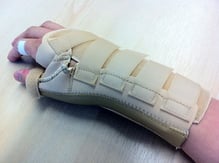 The Occupational Safety and Health Administration (OSHA) requires most employers to prepare and maintain records of occupational injuries and illnesses (I&I Logs) as they occur. OSHA also requires employers to post an annual I&I Summary in each “establishment” within their workplace by February 1, summarizing that workplace’s I&Is during the previous calendar year. Delegated state-run programs impose comparable requirements. Furthermore, OSHA requires some employers to submit their summaries electronically to OSHA – this year by March 3, 2023. The rest of this note summarizes the current requirements.
The Occupational Safety and Health Administration (OSHA) requires most employers to prepare and maintain records of occupational injuries and illnesses (I&I Logs) as they occur. OSHA also requires employers to post an annual I&I Summary in each “establishment” within their workplace by February 1, summarizing that workplace’s I&Is during the previous calendar year. Delegated state-run programs impose comparable requirements. Furthermore, OSHA requires some employers to submit their summaries electronically to OSHA – this year by March 3, 2023. The rest of this note summarizes the current requirements.
Who Is, and Isn’t, Subject To I&I Requirements?
Most employers are subject to I&I requirements. However, OSHA provides two sets of partial exemptions from recording requirements:
- Employers with 10 or fewer employees in the entire company are exempt from I&I record keeping requirements unless directed in writing by OSHA or the Bureau of Labor Statistics (BLS) to comply.
- Individual establishments in specified low-hazard industries are also exempt unless directed in writing by OSHA or BLS to comply. These sectors are identified using North American Industry Classification System (NAICS) codes.
OSHA defines “establishment” as:
- “a single physical location where business is conducted or where services or industrial operations are performed. For activities where employees do not work at a single physical location, such as construction; transportation; communications, electric, gas and sanitary services; and similar operations, the establishment is represented by main or branch offices, terminals, stations, etc. that either supervise such activities or are the base from which personnel carry out these activities.”
OSHA does not consider telecommuting employees to be at a separate establishment when working at home, so the employer must link each such employee to one of its establishments.
Note that partially exempt employers must still report workplace catastrophes within 24 hours (I wrote about those requirements HERE).
Does the Employer Record Injuries And Illnesses As They Occur?
Employers must create a Log of Work-Related I&I for each non-exempt establishment, in which each qualifying event must be recorded. To comply with these requirements, the employer must consider the following:
- Who are “covered employees”?
- Which I&I events are “occupational” (work-related)?
- Which I&I events to record (i.e., meet OSHA’s recording criteria)?
- How and when is information recorded in the I&I Log?
- Whether it may be necessary to amend the information at some later time.
- Whether the employer takes steps to protect an affected employee’s privacy when posting.
An employer must therefore determine whether the incident is even subject to recording – whether a “covered employee” has received an “occupational” injury or illness. While most incidents either obviously qualify or fail to qualify, OSHA provides guidance and examples covering ambiguous situations. For example, an employer may have to consider whether a heart attack at work was related to the employee’s work activities or a chronic non-work-related illness.
Once the employer determines an injury or illness is work-related, it must be recorded in the employer’s I&I Log for that establishment (OSHA Form 300 or a state equivalent). Form 300 consists of a number of columns, with the following captions:
- Case number (column A) – assigned by the employer
- Employee’s name and job title (columns B and C)
- Date of injury or onset of illness (column D)
- Location – where the event occurred (column E)
- Description - describe injury or illness, parts of body affected, and object/substance that directly injured or made person ill (column F)
- Classify the case – by choosing one of the following: death, days away from work, job transfer or restriction, other recordable cases (columns G through J)
- Duration – enter the number of days the injured or ill worker was away from work and/or subject to on job transfer or restriction (columns K and L)
- Classification – choose one of the following: injury, skin disorder, respiratory condition, poisoning, hearing loss, or all other illnesses (columns M(1) through M(6))
Does the Employer Create and Post An Annual I&I Summary in each Establishment?
Every year in each establishment, each non-exempt employer must summarize all recorded I&I incidents, post an I&I Summary by February 1, and keep it posted for at least 3 months (until April 30). Employers use OSHA Form 300A (or a state equivalent), which provides for the following information:
- Number of Cases–with columns for total numbers of: deaths, cases with days away from work, cases with job transfer or restrictions, and other recordable cases.
- Number of days–total number of days away from work, and total number of days of job transfer or restriction.
- Injury and illness types–totals for each of the 6 categories of I&I identified above.
- All establishments in designated industries (using North American Industry Classification System (NAICS) codes) with 20 or more employees (but fewer than 250) at any time during a year
- Any other establishment individually notified by OSHA to report.
These requirements apply nationwide, since OSHA requires delegated states (“state plan states”) to adopt comparable requirements. OSHA provides a secure Injury Tracking Application (ITA) for submission of this information online.
Is the employer required to submit electronic I&I submissions with OSHA?
OSHA requires certain employers to submit required I&I records from the employers’ OSHA Form 300A Summary of Work-Related Injuries and Illnesses to OSHA electronically, as follows:
- All establishments with 250 or more employees at any time during a year
- All establishments in designated industries with 20 or more employees (but fewer than 250) at any time during a year
- Any other establishment individually notified by OSHA to report.
These requirements also apply nationwide. OSHA provides a secure Injury Tracking Application for submission of this information.
In October 2022, OSHA transitioned the login procedure to access its I&I ITA to tie these agency requirements to the government-wide Login.gov system, which is a secure sign-in service for members of the public to use to sign in to participating government agencies’ reporting and data systems. Each person (individual or organization) creates a single Login.gov account with a single username and password, which can then be used to log in to online systems offered by participating agencies – including, now, OSHA’s ITA. Account holders must connect their ITA account to a Login.gov account with the same email address in order to access ITA to provide 2022 Form 300A data (i.e., for the 2023 collection). (I wrote about these requirements HERE).
OSHA proposed further revisions to electronic reporting requirements in March 2022, but has not finalized them in time to apply to the impending 2022 reports due in 2023. (I wrote about the proposal HERE).
What happens next?
Affected employers should have compiled and posted workplace events by February 1, and may be required to submit electronic information by March 3.
Self-Assessment Checklist
Has the organization defined “establishments” where work is performed?
Does the organization have one or more establishments subject to I&I recording and posting requirements?
Does the organization have one or more establishments required to make electronic reports of I&I data through OSHA’s ITA system?
Will the organization have completed the transition of its ITA account and reporting procedures to use Login.gov for reports due in March 2023?
Where Can I Go For More Information?
About the Author
 Jon Elliott is President of Touchstone Environmental and has been a major contributor to STP’s product range for over 30 years.
Jon Elliott is President of Touchstone Environmental and has been a major contributor to STP’s product range for over 30 years.
Mr. Elliott has a diverse educational background. In addition to his Juris Doctor (University of California, Boalt Hall School of Law, 1981), he holds a Master of Public Policy (Goldman School of Public Policy [GSPP], UC Berkeley, 1980), and a Bachelor of Science in Mechanical Engineering (Princeton University, 1977).
Mr. Elliott is active in professional and community organizations. In addition, he is a past chairman of the Board of Directors of the GSPP Alumni Association, and past member of the Executive Committee of the State Bar of California's Environmental Law Section (including past chair of its Legislative Committee).
You may contact Mr. Elliott directly at: tei@ix.netcom.com
